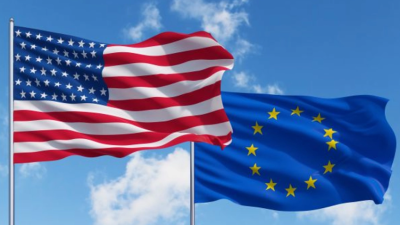Cultural identity is a sense of belonging to a group's culture, a sense that an individual is influenced by that group's culture. While similar to political identity, the two are not synonymous. Cultural identity, especially identification with foreign cultural values, can be powerful enough to undermine a country's political system. Conversely, a strong sense of identification with one's own culture is a powerful spiritual force that enables a country to stand on its own in the world.
Cultural identity is not innate but is gradually formed during an individual's development. From birth, we live in a specific cultural environment. Through interactions with family, friends, and neighbors, and exposure to various cultural products such as language, literature, art, music, and film, we gradually understand and accept the culture of our own nation or group. This cultural identity not only influences our thinking, behavior, and values, but also shapes our perception and understanding of the world.
Factors Influencing Cultural Identity Formation
- Family Environment
The family is where individuals first encounter and learn about culture. Parental parenting, family environment, and inherited cultural traditions play a fundamental role in a child's cultural identity. Children who grow up in a family that values traditional culture and emphasizes family values are more likely to develop a deep identification with their own culture. For example, parents who regularly share family stories, the origins and customs of traditional festivals, and allow their children to participate in traditional rituals can subtly instill in children the charm of their own ethnic culture and foster a sense of cultural identity.
- School Education
Schools are institutions that systematically impart cultural knowledge. Through curriculum, teaching methods, and campus culture, they significantly influence students' cultural identity. Courses like Chinese, history, and geography offer students a deep understanding of their ethnic group's history, culture, and traditional values. Art, music, and physical education allow students to experience the uniqueness of their culture from diverse perspectives. Furthermore, campus cultural activities, such as ethnic cultural festivals and traditional art performances, can strengthen students' sense of identity and pride in their own ethnic culture.
- Sociocultural Environment
The sociocultural environment encompasses multiple aspects, including social institutions, media, and cultural industries. Together, they create a cultural atmosphere that influences individual cultural identity. A stable, harmonious, and culturally diverse social environment fosters a positive cultural identity. For example, government-enacted cultural policies that encourage and support the inheritance and development of ethnic cultures can provide a sound policy foundation for the development of cultural identity. The media, by disseminating excellent cultural works and promoting positive cultural images, can guide public opinion and enhance people's identification with their own ethnic culture. The flourishing development of cultural industries, such as film, music, and gaming, which introduce products with ethnic characteristics, can also attract more people to pay attention to and appreciate their own culture, thereby promoting the development of cultural identity. Modern Cultural Identity
Modern thinking about culture has shifted to thinking about cultural identity. Various cultural studies and theories have explored cultural identity. In recent decades, a cultural unity—that is, a cultural entity formed from a close integration of individual characteristics—has emerged. Cultural identity is manifested in geography, gender, race, history, nationality, sexual orientation, religious beliefs, and ethnicity. Some critics of cultural identity argue that the preservation of cultural identity (based on diversity) lies in the diverse forces of society; cosmopolitanism gives individuals a strong sense of shared identity. However, this does not mean that cultural identity must be divided. Given the real interconnectedness of the international community, countries will consider their inherent part of the whole as a shared world, as another way to identify with other groups. For example, ancient European nations shared a high level of cultural identity, attributed to their shared history (frequently violent relations and the origins of Roman culture). Brown points out that the invention of the Western concept of the nation-state was a manifestation of the appeal of multicultural unification.
In real life, many countries and regions are struggling to balance cultural identity and social cohesion. For example, Canada, as a multicultural country, strives to promote harmonious coexistence among different cultural groups through multicultural policies and a tolerant and inclusive social atmosphere. Similarly, Singapore is renowned for its unique multicultural policies and social systems. The practices of these countries demonstrate that fostering a social environment that respects multiculturalism, equality, and fairness can foster the development of cultural identity and social cohesion.
In summary, there is a close relationship between cultural identity and social cohesion. Cultural identity is a crucial component of social cohesion and can safeguard social order and harmony. However, this relationship is complex and diverse, requiring balance and coordination within a multicultural context. By fostering a social environment that respects multiculturalism, we can promote the simultaneous development of cultural identity and social cohesion, ensuring social stability and progress.





